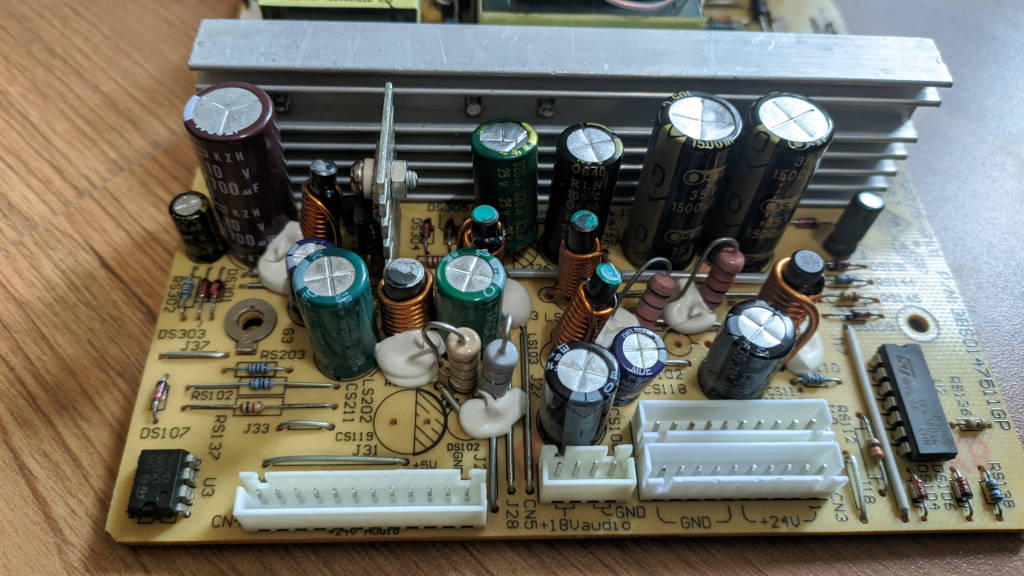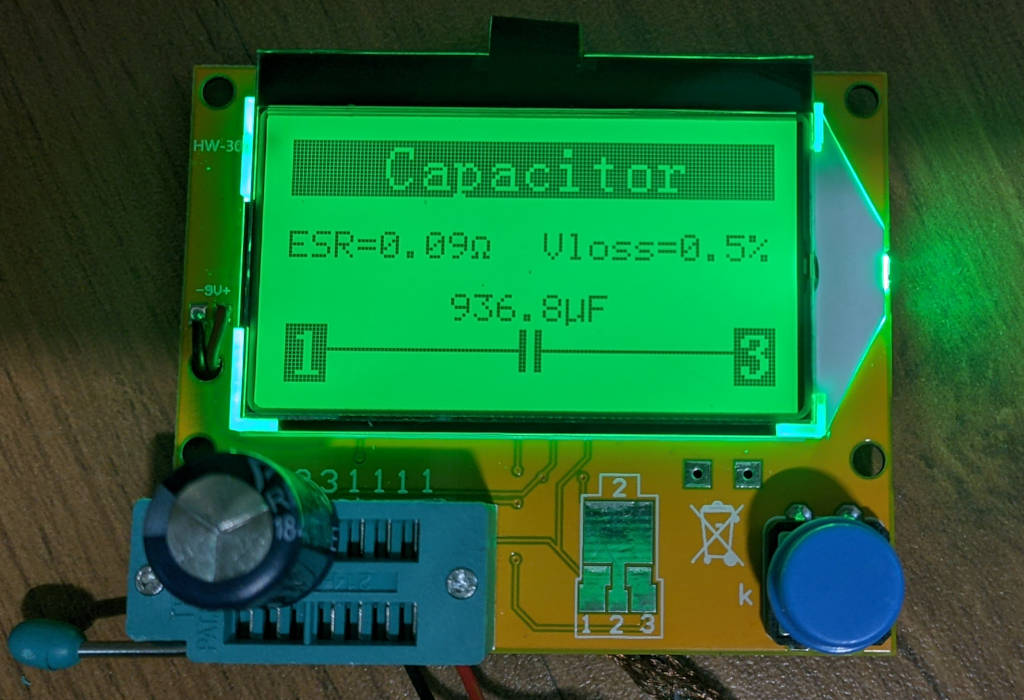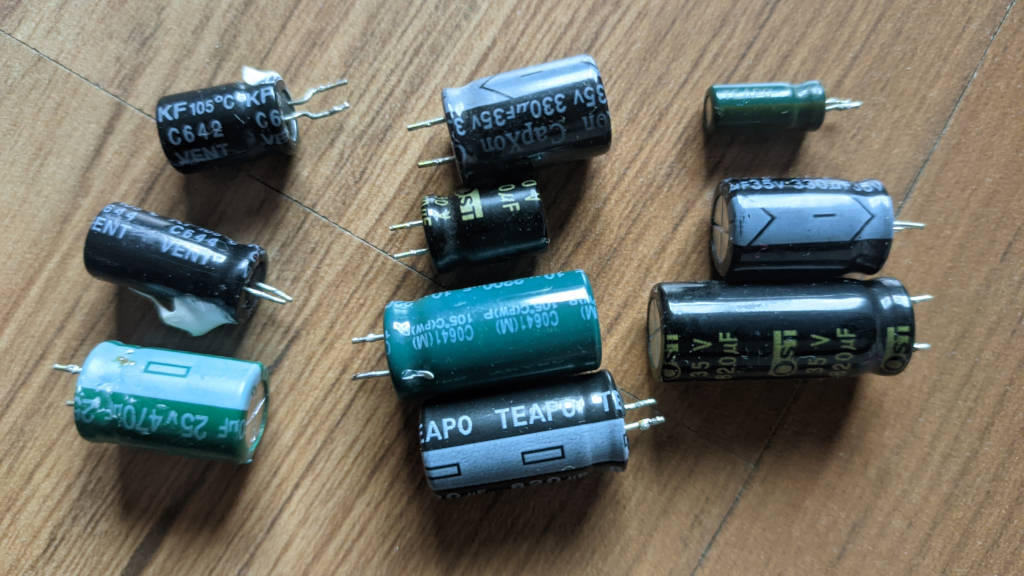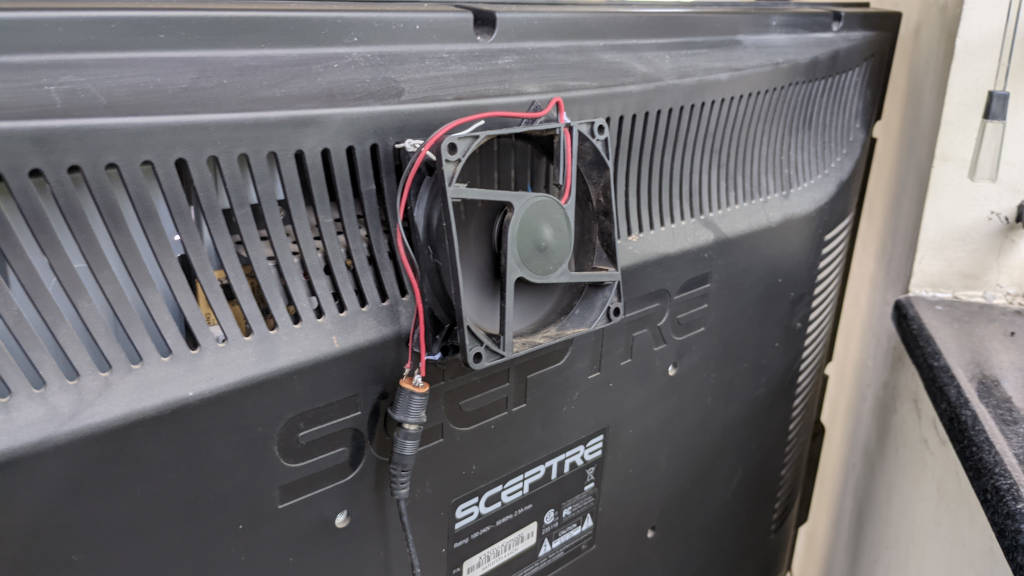Repaired My TV
In one of my previous posts I mentioned that I tried to repair a TV but my first attempt failed. After some more work I was finally able to fix it! At least some positive news after a lot of set backs in repairs, about which I will write in another post. If you have not read my previous post, I urge you to read that first. Basically what happened was that my old LCD TV back from 2006, started to show its age and conked out, not quite spectacularly though. My initial investigation led me to believe that the culprit could be 3 capacitors (caps) on the power board. However, when I ordered the replacement parts and soldered them, the TV was still not turning on, or is turning on briefly before freezing.
Warning: There is risk of electric shock. Don’t go about opening back panels of TV and touching parts even when you have disconnected the power. There are some huge capacitors that can store charge for a long time after disconnecting the mains. Only attempt troubleshooting if you know what you are doing and are skilled in this line of work. You have been warned!
At this point, the suspect changed from caps to main board because a frozen screen is more of an indication of main board problem than power board. But when I checked the voltages on the main board pins, I observed that the voltage was dropping slowly which again puts the power board in question. But didn’t I replace the swollen caps? What else could be the problem? After reading a few forums, I came across a post which suggested that I replace all the caps on the power board. While some caps may not have swollen or show any external damage, they could be damaged internally. All that means is that I will need to replace 12 more caps in addition to the 3 caps that I already replaced.
I placed an order for all the caps that I needed, but there was one more problem. One of the capacitor I needed was supposed to be rated for 820 uf and 25V/35V. Unfortunately I could not find that particular cap from the websites that I regularly use to buy my electronic components from. It was available on Amazon for some crazy price. I decided to take a risk and buy a slightly higher value cap (1000 uF) hoping that a 20% tolerance will be acceptable. Then, another set back. The 1500 uF caps that were delivered to me were reading a very low value of less than 1000 uF. Completely out of spec although the label on them clearly mentions 1500 uF. I ordered 4 such caps and all were reading less then 1000 uF for some reason. I contacted support to get them replaced.
Meanwhile I decided to replace the rest of the caps. By now I have become much better at desoldering components from the board. I replaced 10 caps in total out of the 15 that I was supposed to replace.
- One cap I did not replace because I measured it to be reading perfectly well according to the spec. It was a big 4700 uF cap manufactured by a good company (Nichicon if I remember correctly) so I trust it more than a new cap that I purchased.
- Two caps I could not replace because the seller sent me bad caps.
- Two caps I did not take the risk to replace because they are very close to SMD components and I was worried that I might damage them with my poor soldering skills.
While I was waiting for the 1500 uF replacements to arrive I got a little impatient and connected the power board again to the TV to test it out. Well, what do you know, the TV started working! So it seems like one of the caps I replaced fixed it. I was ecstatic. Finally, after a lot of work and going in with zero expectations, it all really paid off.
One thing I did not mention in all of this is that while the caps I replaced matched the rating (mostly) of the old caps, one rating that did not match was temperature tolerance of the caps. The caps in the TV were rated for 105 C temperature. The ones I could purchase were all rated for 85 C only. That is a cause for concern in my opinion and I am sure these caps will blow up at some point. To extend the life, I added a cooling fan right on top of the power board on the back of the TV. Basically it is a brushless fan from one of my old (now defunct) desktop. I soldered a USB connector and connected it to a 5V USB port. So any time the TV is turned on, the fan will start spinning to keep the board cool. Hope this will help the caps.
That was quite a DIY adventure. The TV has been working fine for the past month and I am hoping it will continue to do so in the future. Only time will tell.







